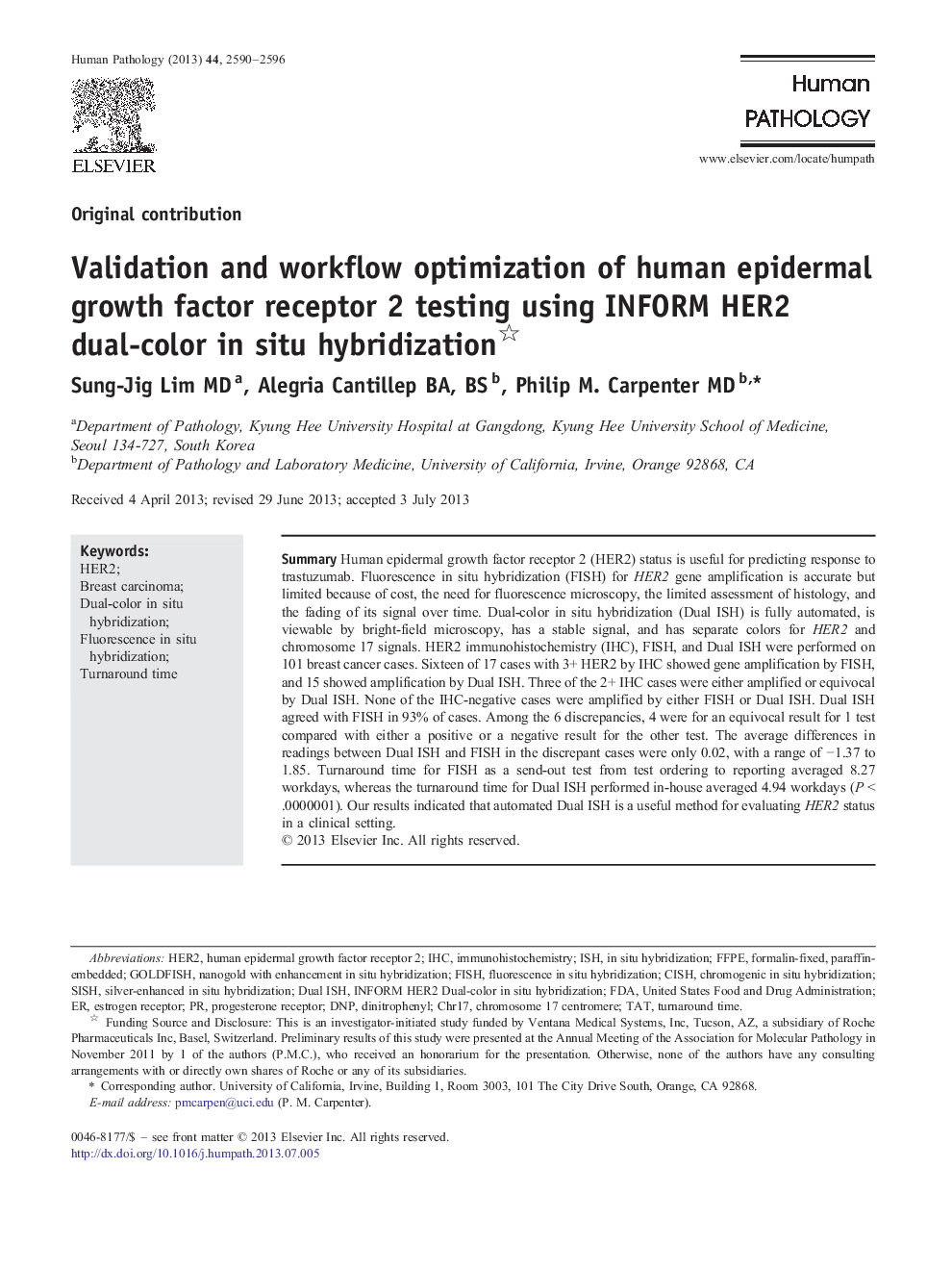| کد مقاله | کد نشریه | سال انتشار | مقاله انگلیسی | نسخه تمام متن |
|---|---|---|---|---|
| 6215680 | 1271400 | 2013 | 7 صفحه PDF | دانلود رایگان |

SummaryHuman epidermal growth factor receptor 2 (HER2) status is useful for predicting response to trastuzumab. Fluorescence in situ hybridization (FISH) for HER2 gene amplification is accurate but limited because of cost, the need for fluorescence microscopy, the limited assessment of histology, and the fading of its signal over time. Dual-color in situ hybridization (Dual ISH) is fully automated, is viewable by bright-field microscopy, has a stable signal, and has separate colors for HER2 and chromosome 17 signals. HER2 immunohistochemistry (IHC), FISH, and Dual ISH were performed on 101 breast cancer cases. Sixteen of 17 cases with 3+ HER2 by IHC showed gene amplification by FISH, and 15 showed amplification by Dual ISH. Three of the 2+ IHC cases were either amplified or equivocal by Dual ISH. None of the IHC-negative cases were amplified by either FISH or Dual ISH. Dual ISH agreed with FISH in 93% of cases. Among the 6 discrepancies, 4 were for an equivocal result for 1 test compared with either a positive or a negative result for the other test. The average differences in readings between Dual ISH and FISH in the discrepant cases were only 0.02, with a range of â1.37 to 1.85. Turnaround time for FISH as a send-out test from test ordering to reporting averaged 8.27 workdays, whereas the turnaround time for Dual ISH performed in-house averaged 4.94 workdays (P < .0000001). Our results indicated that automated Dual ISH is a useful method for evaluating HER2 status in a clinical setting.
Journal: Human Pathology - Volume 44, Issue 11, November 2013, Pages 2590-2596